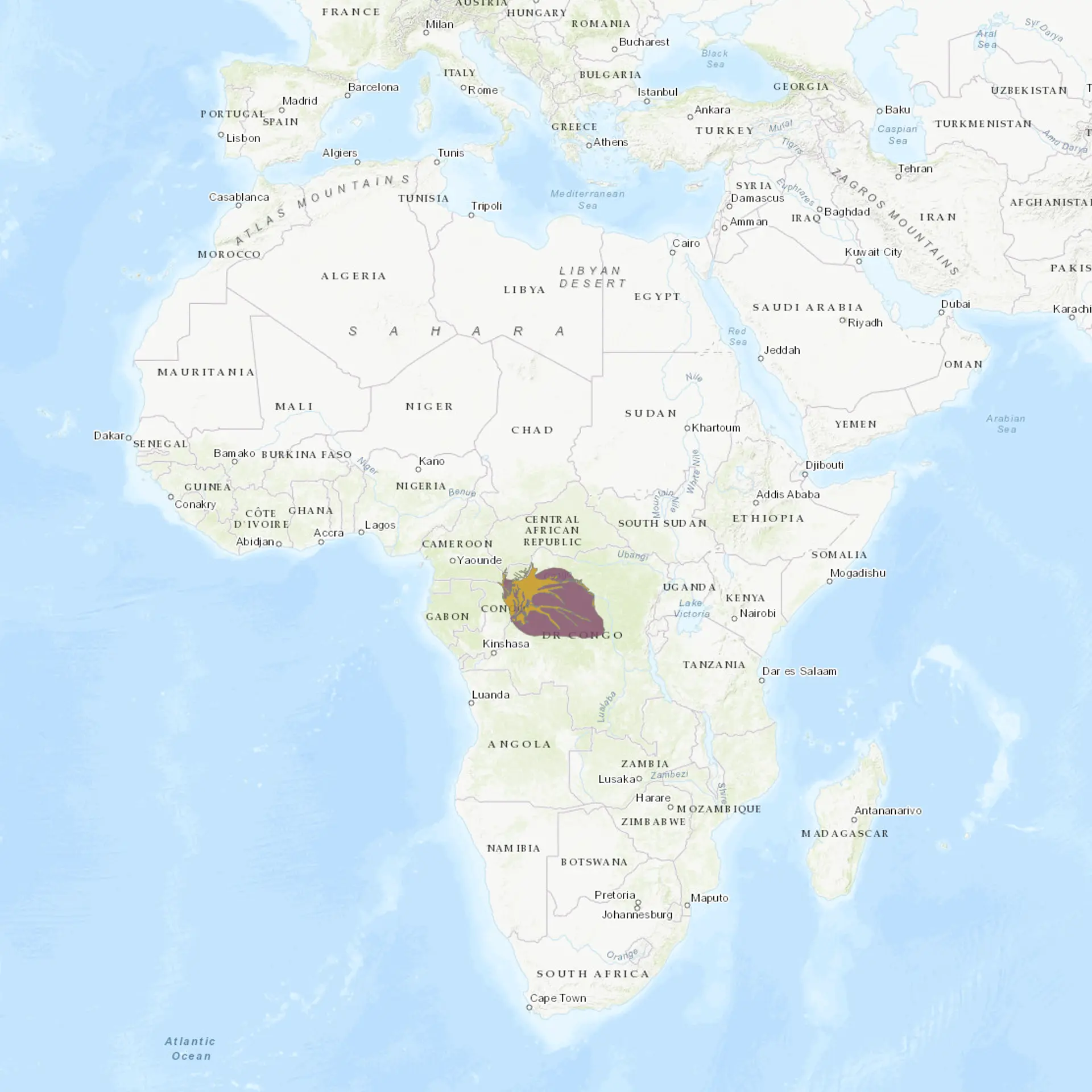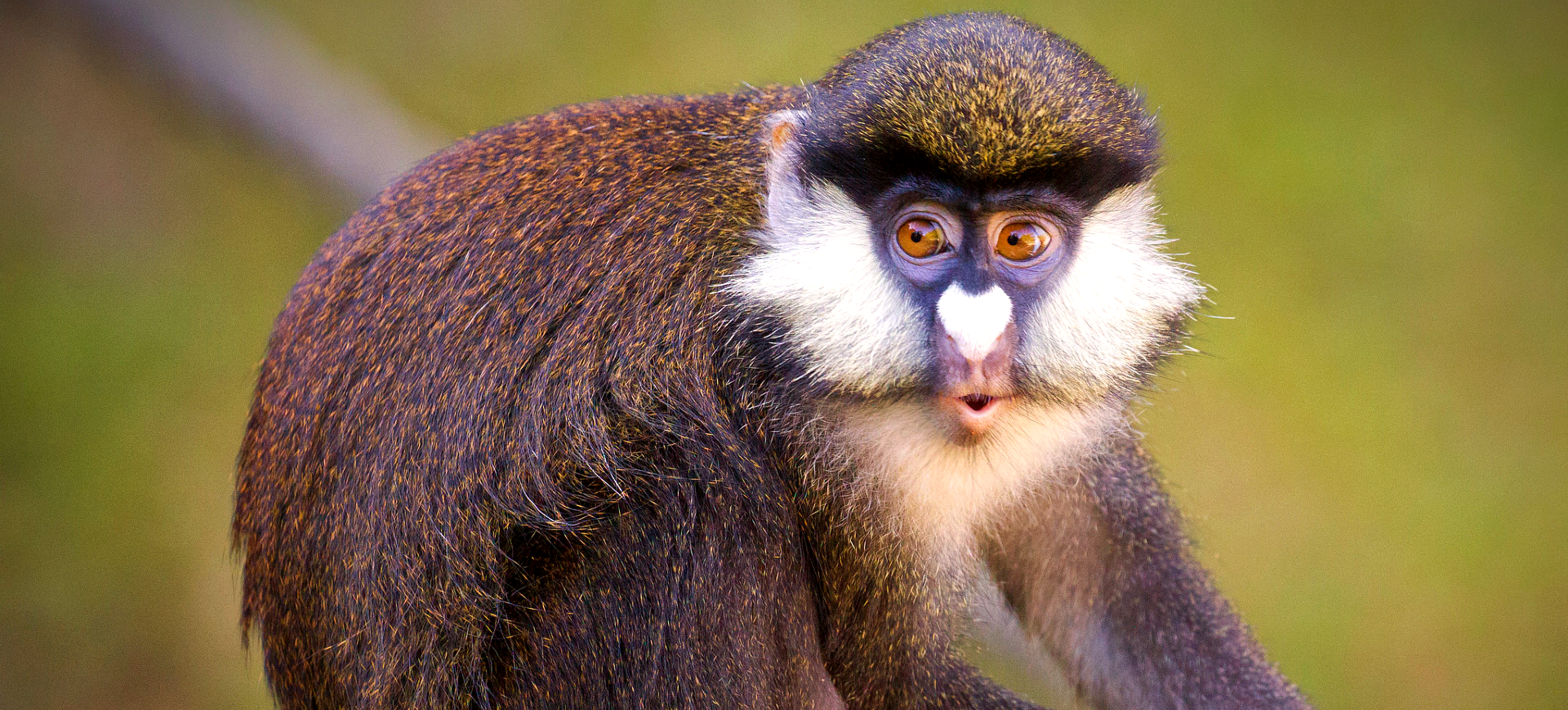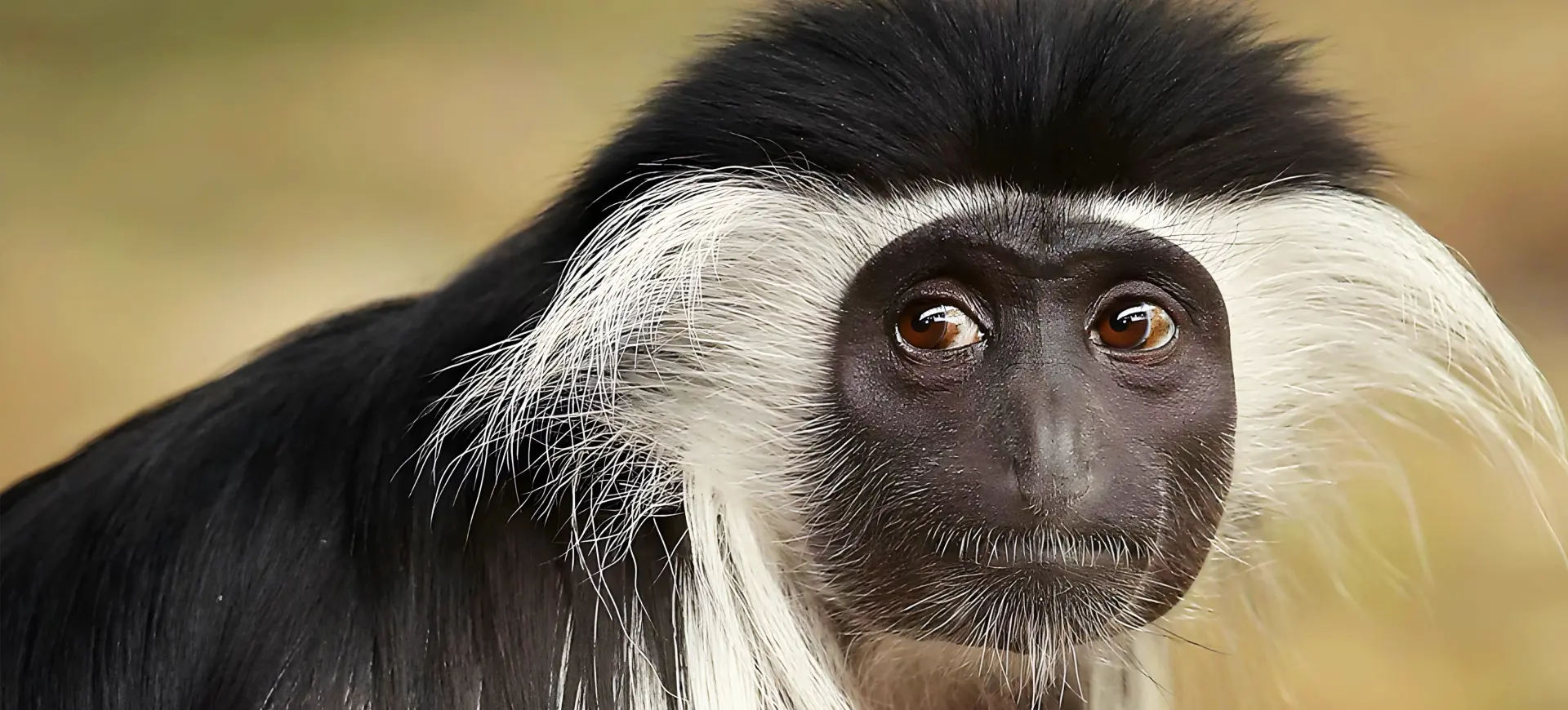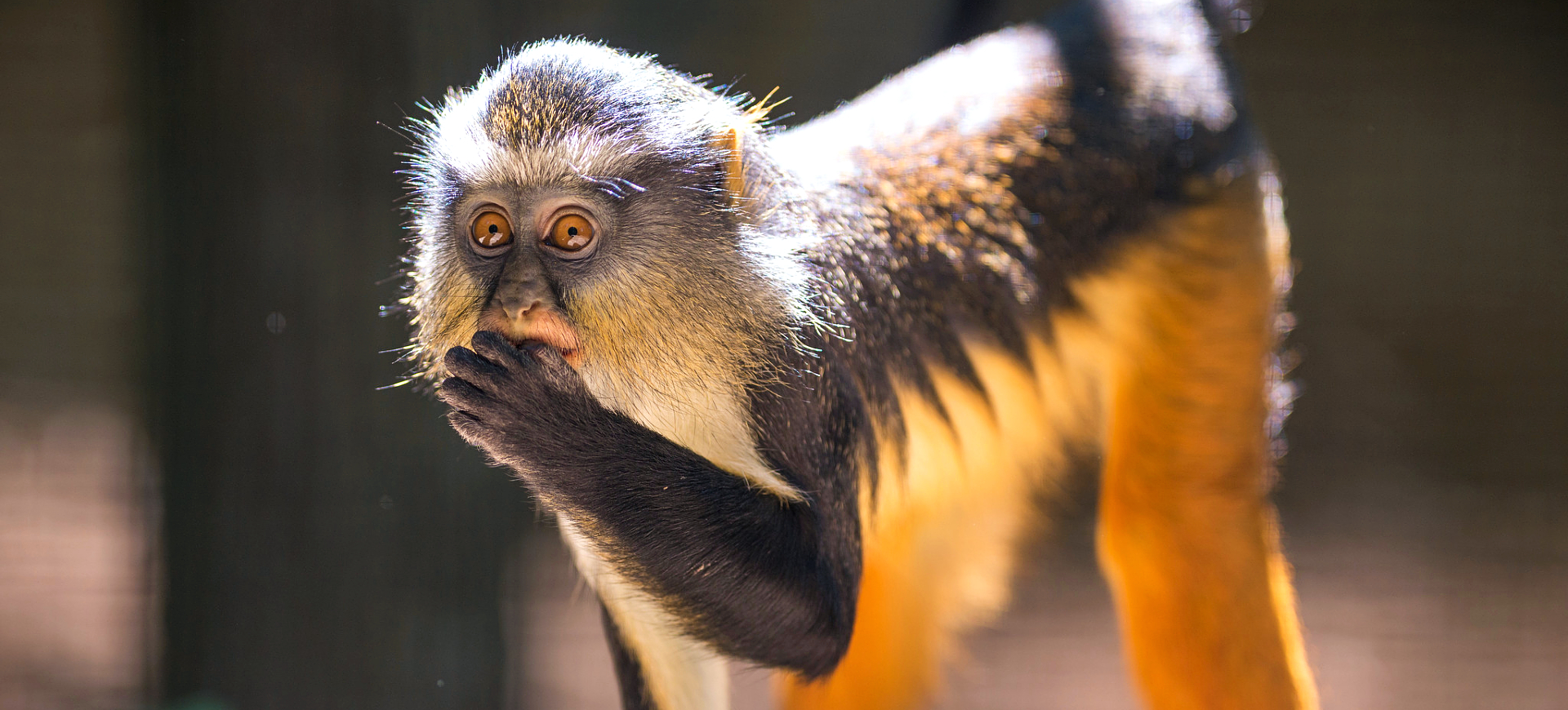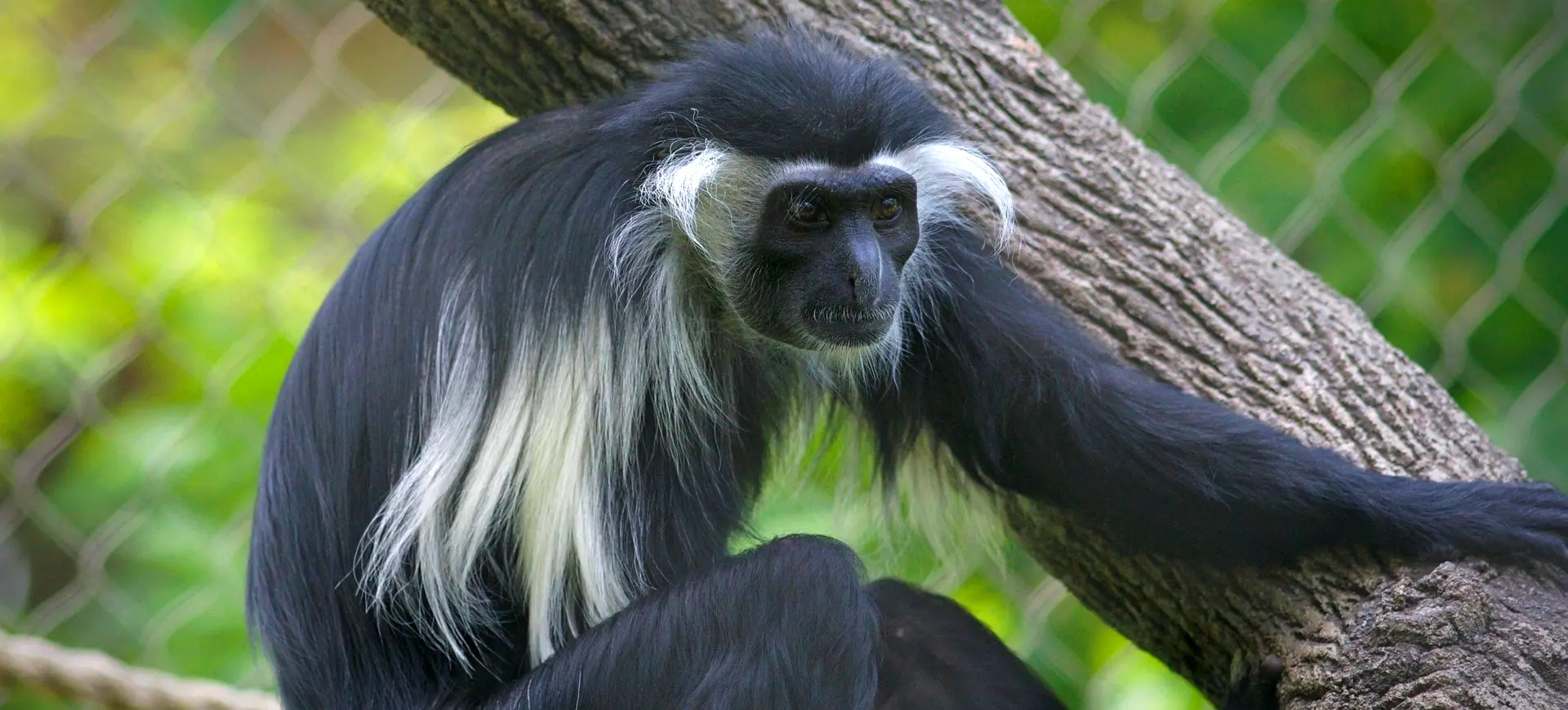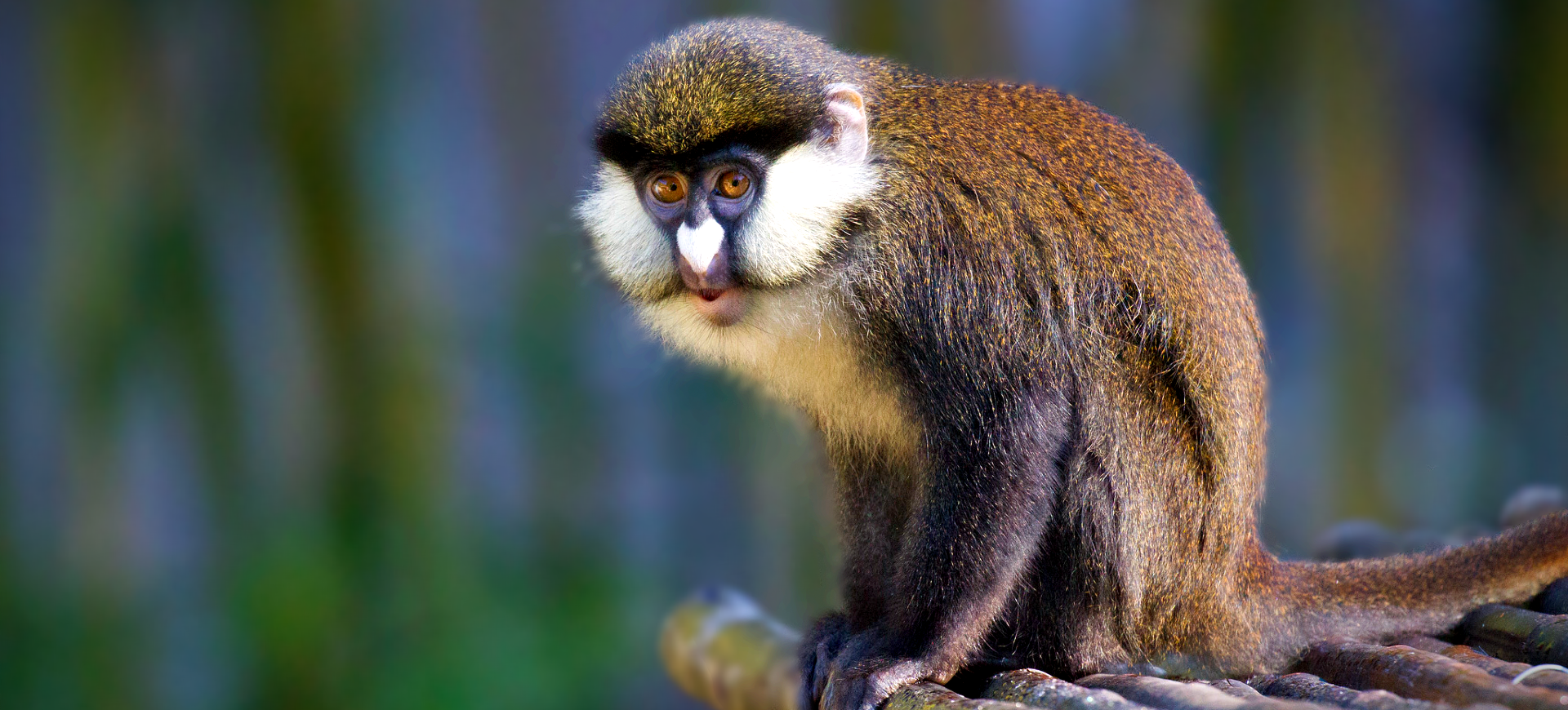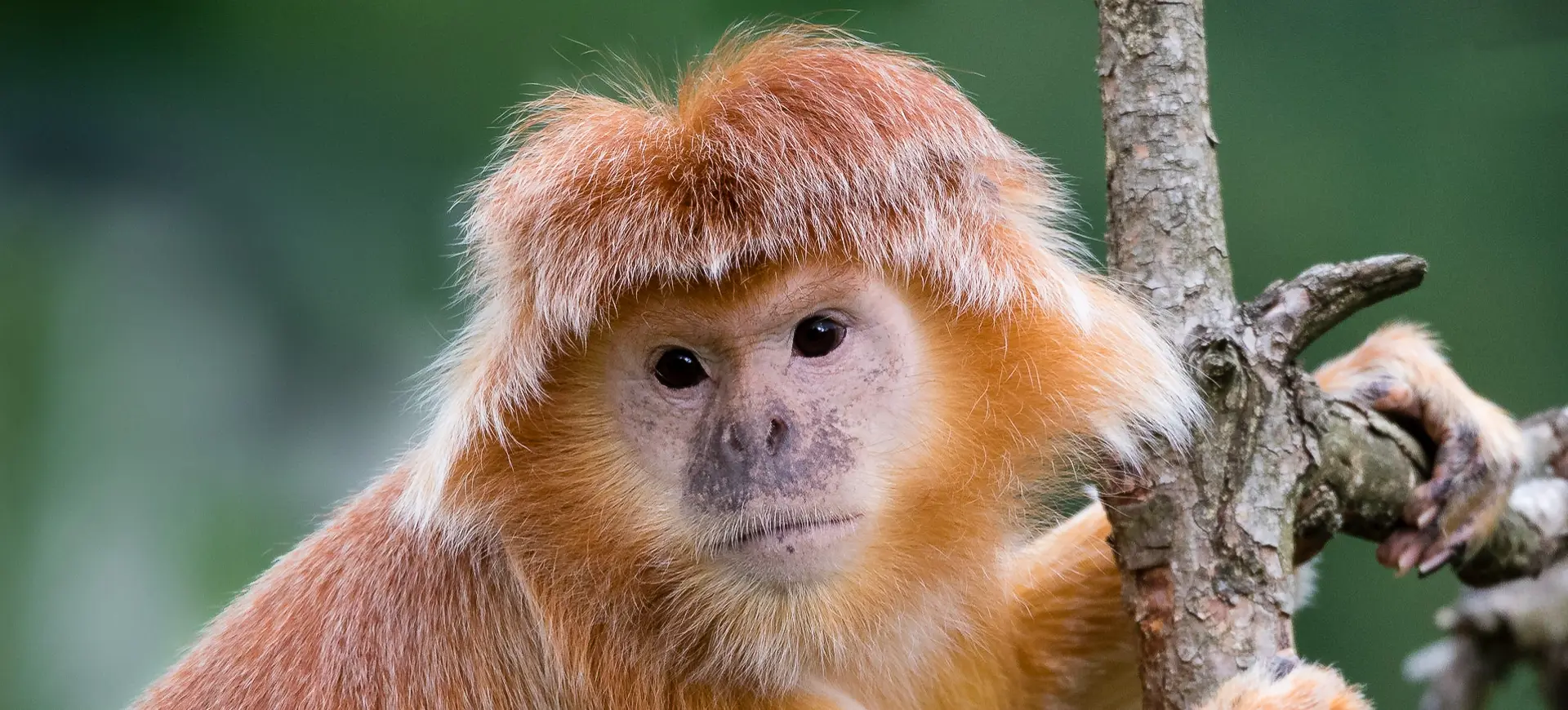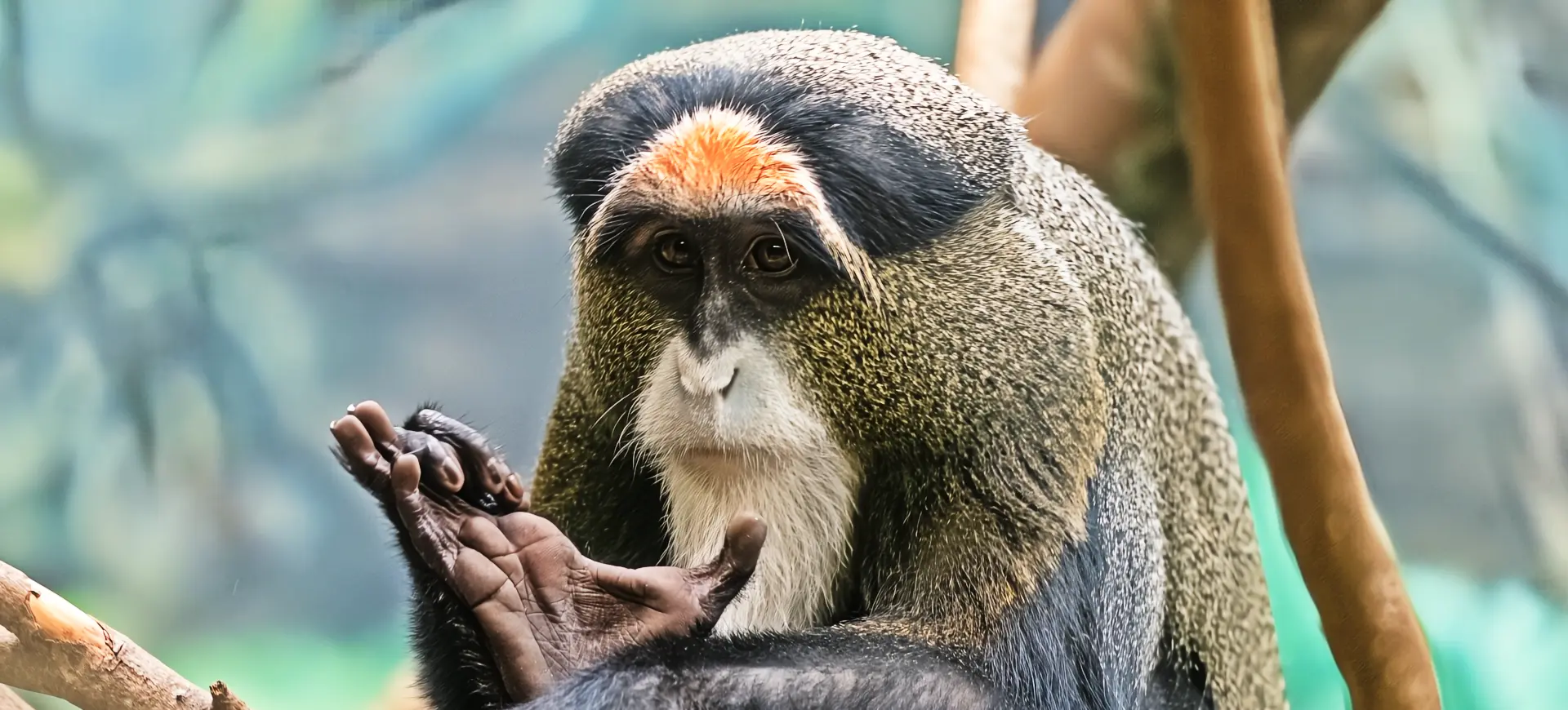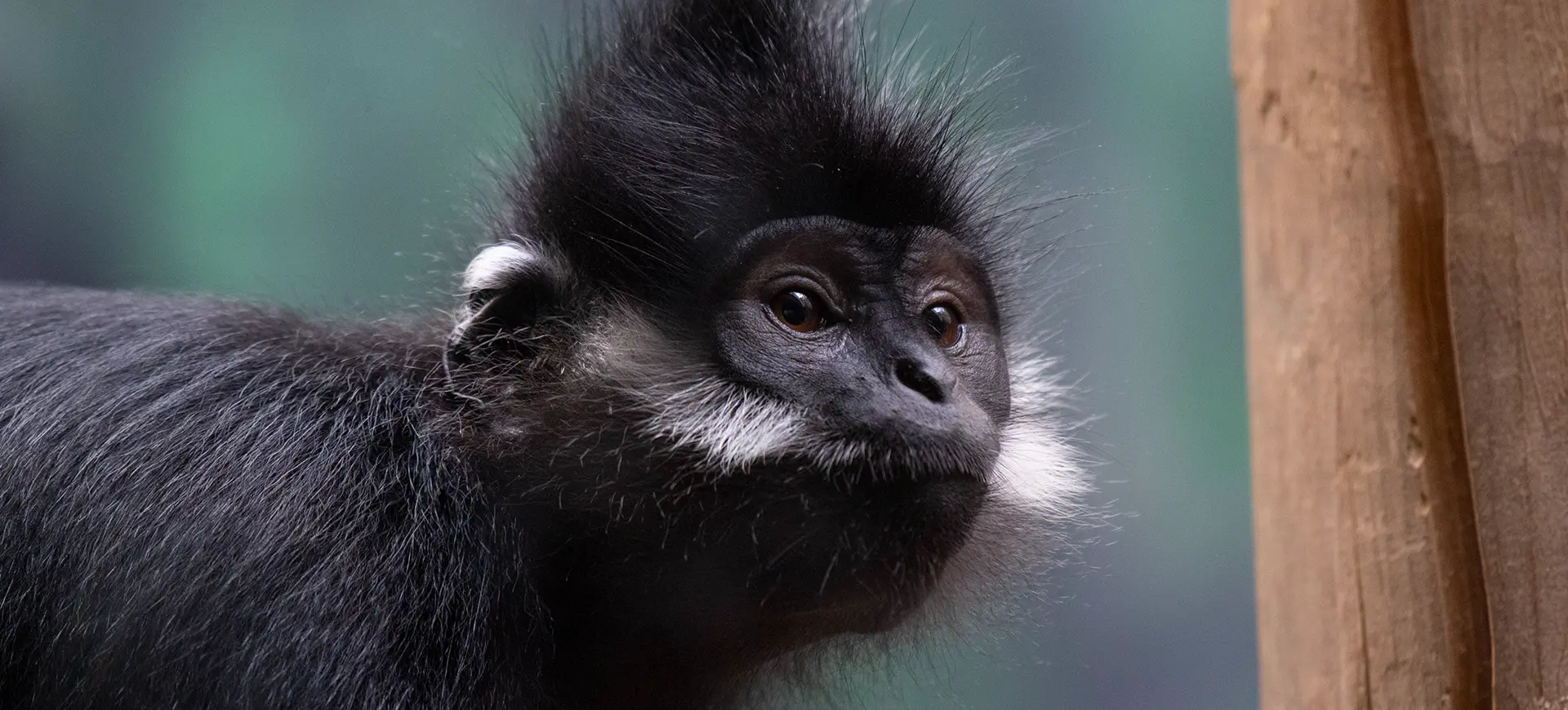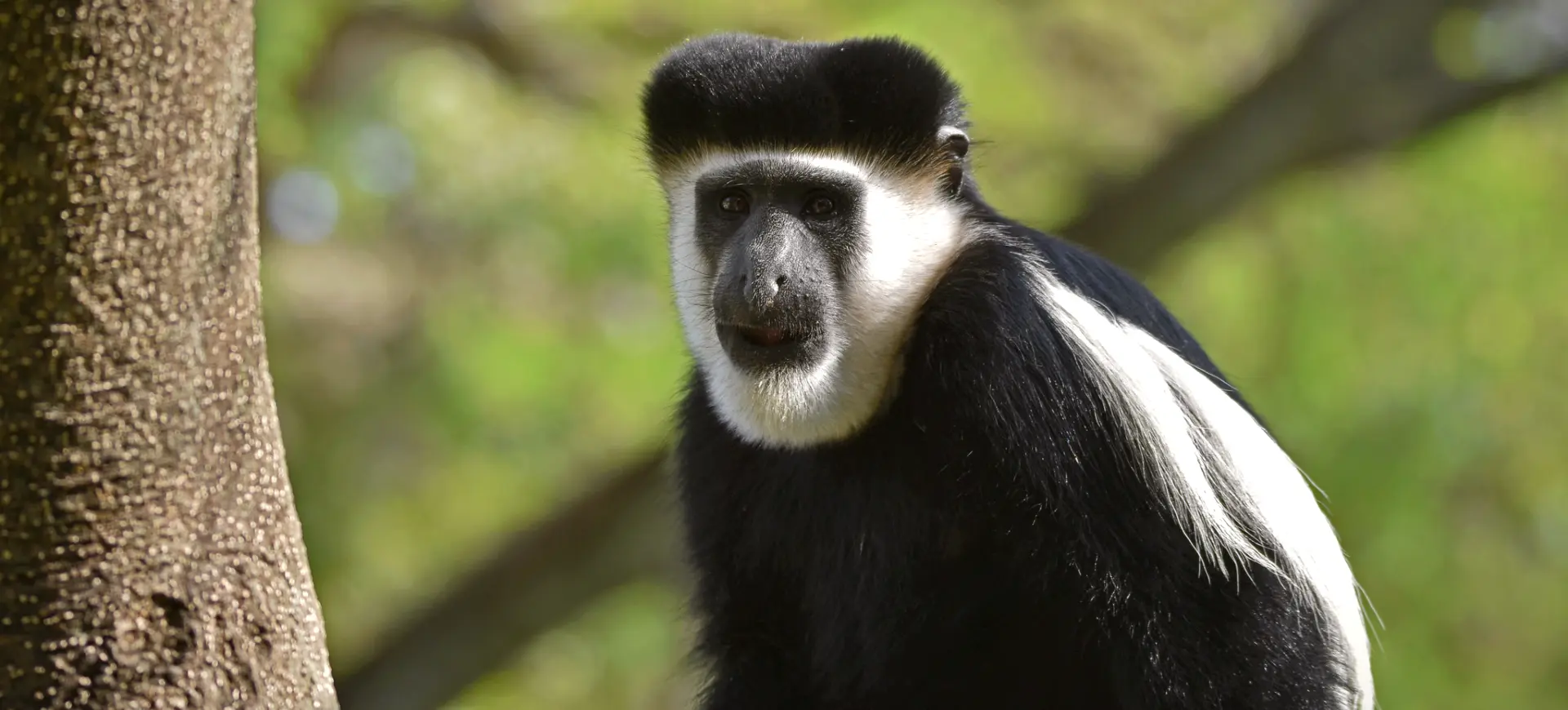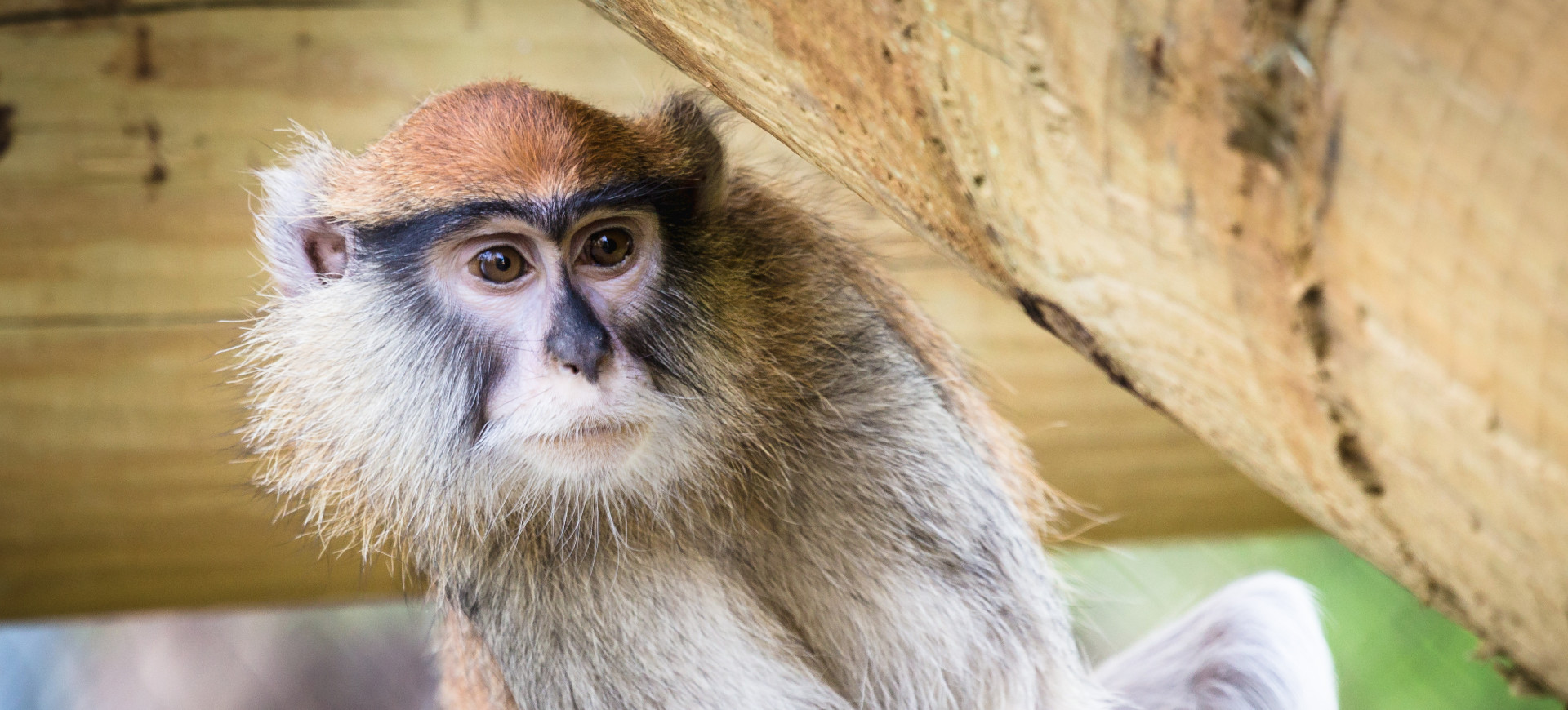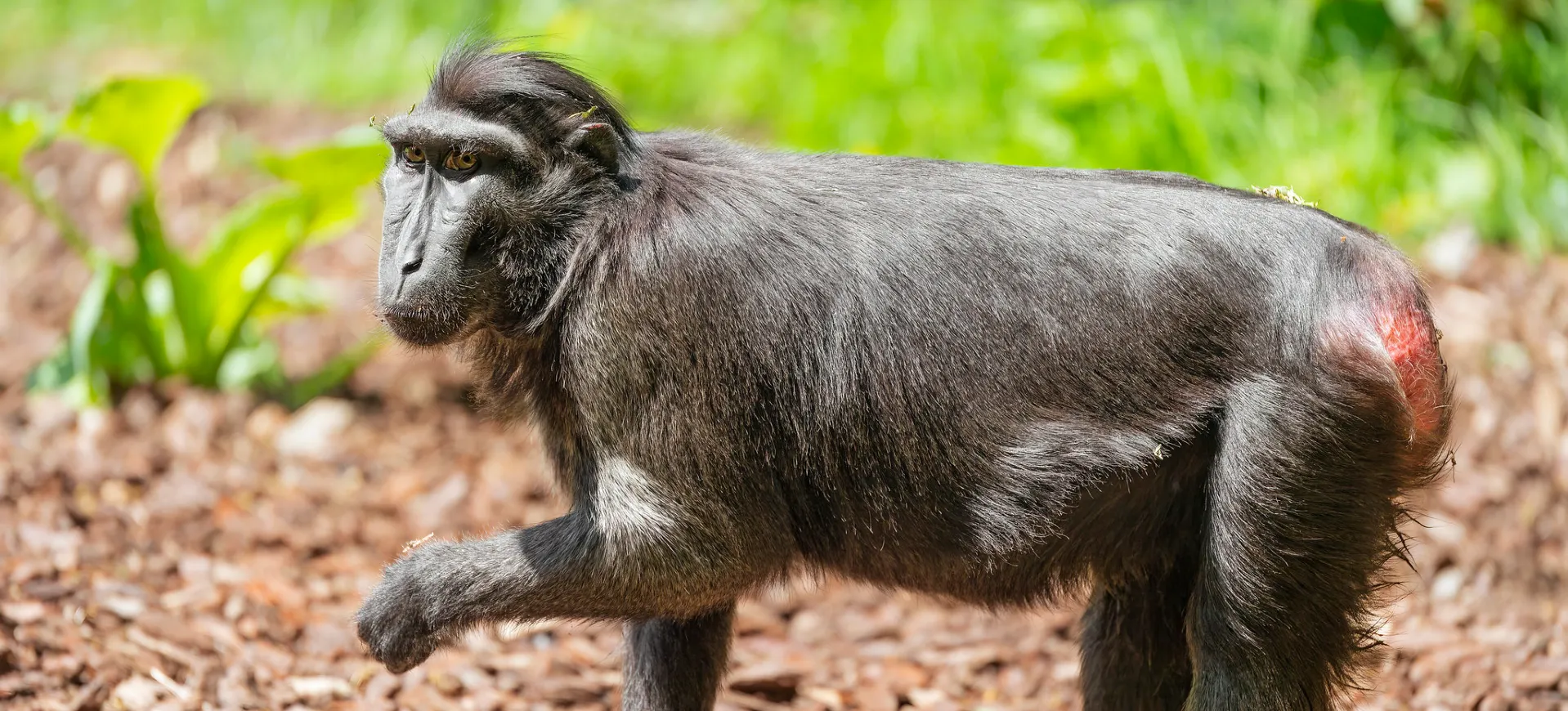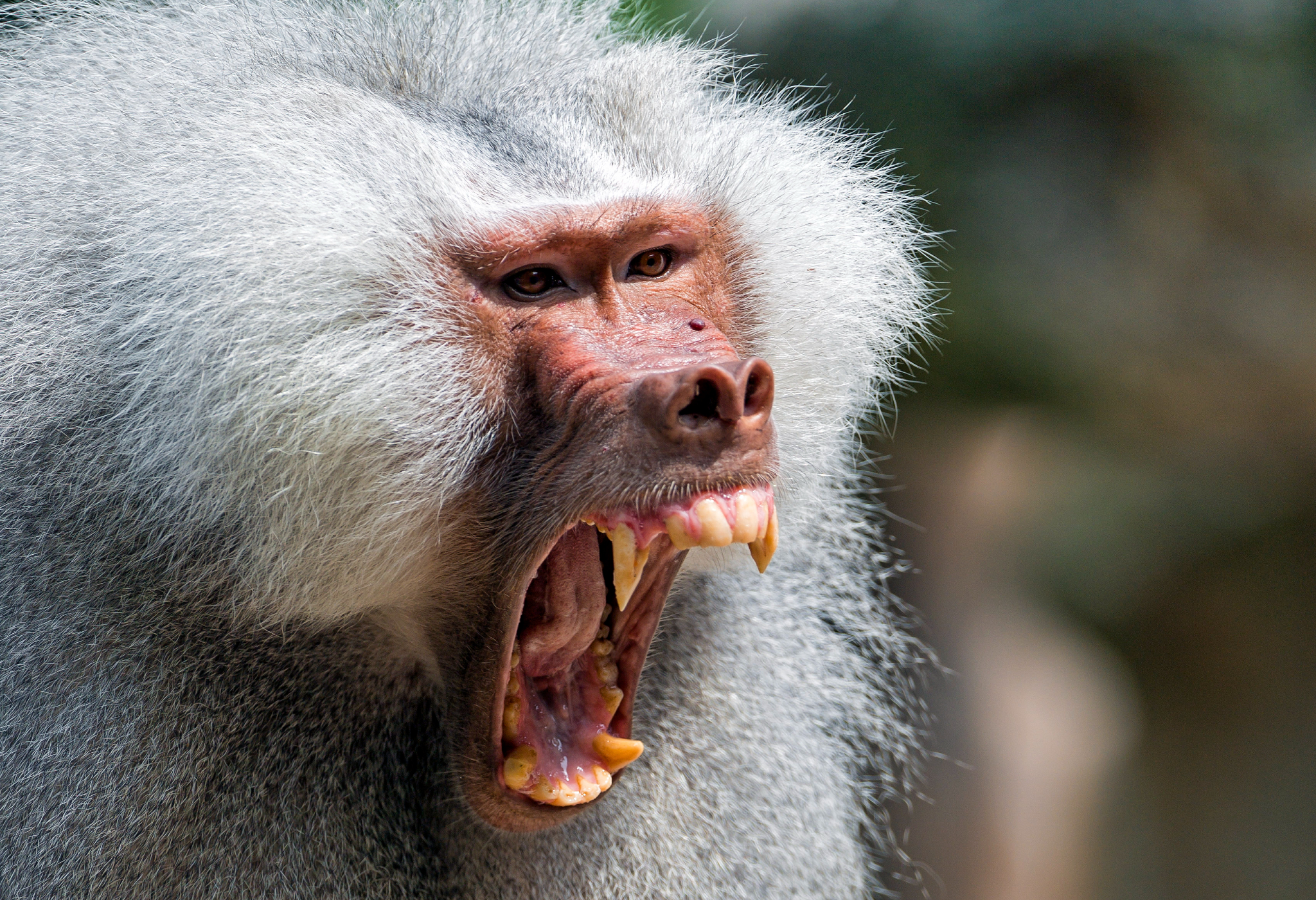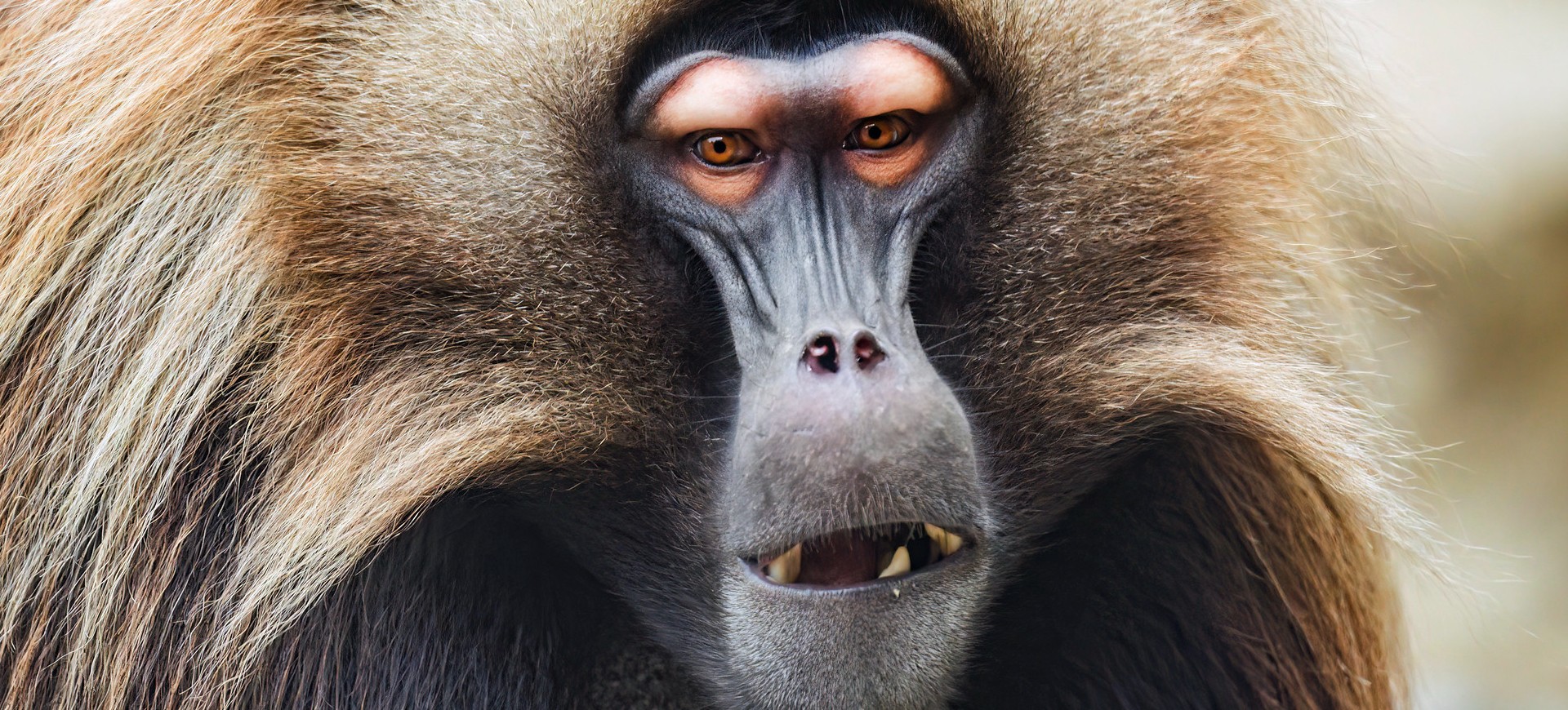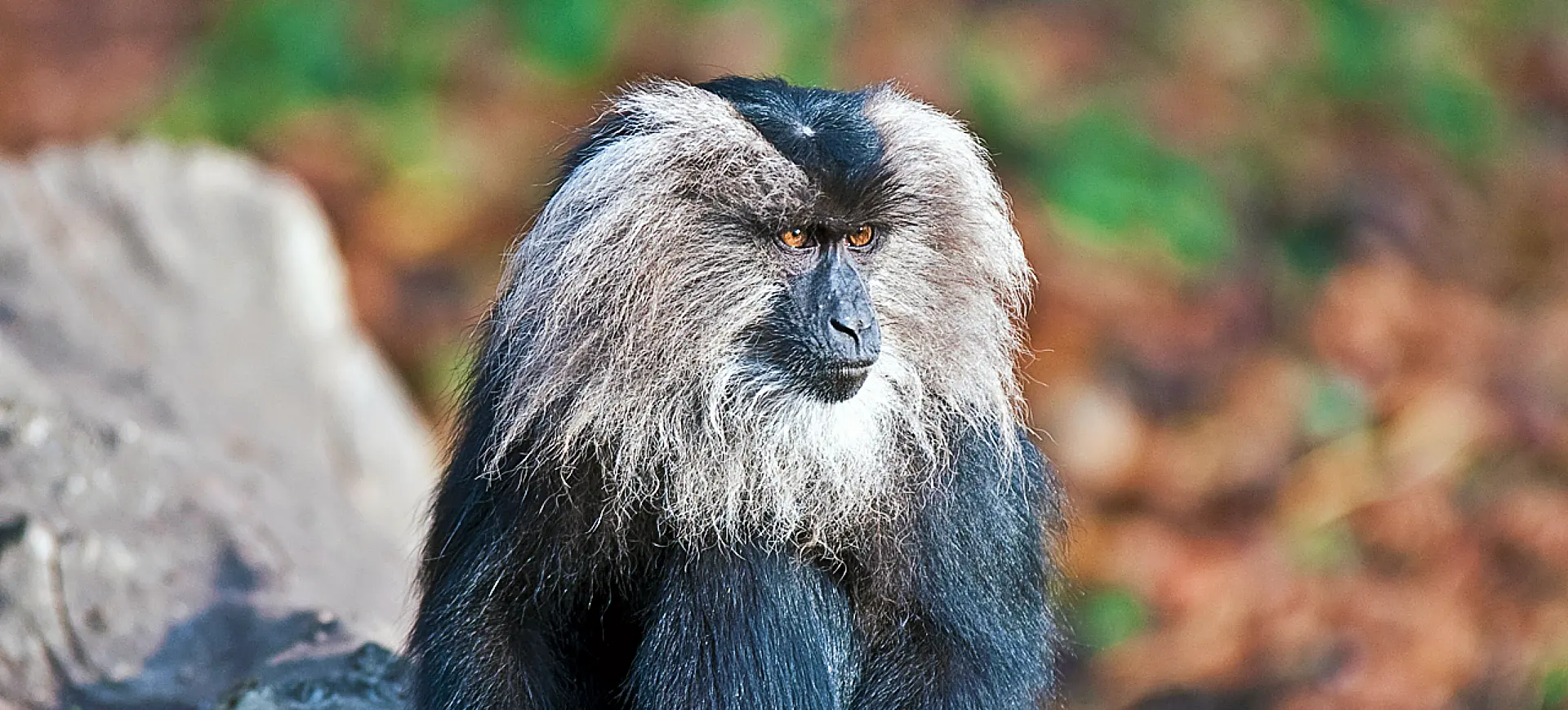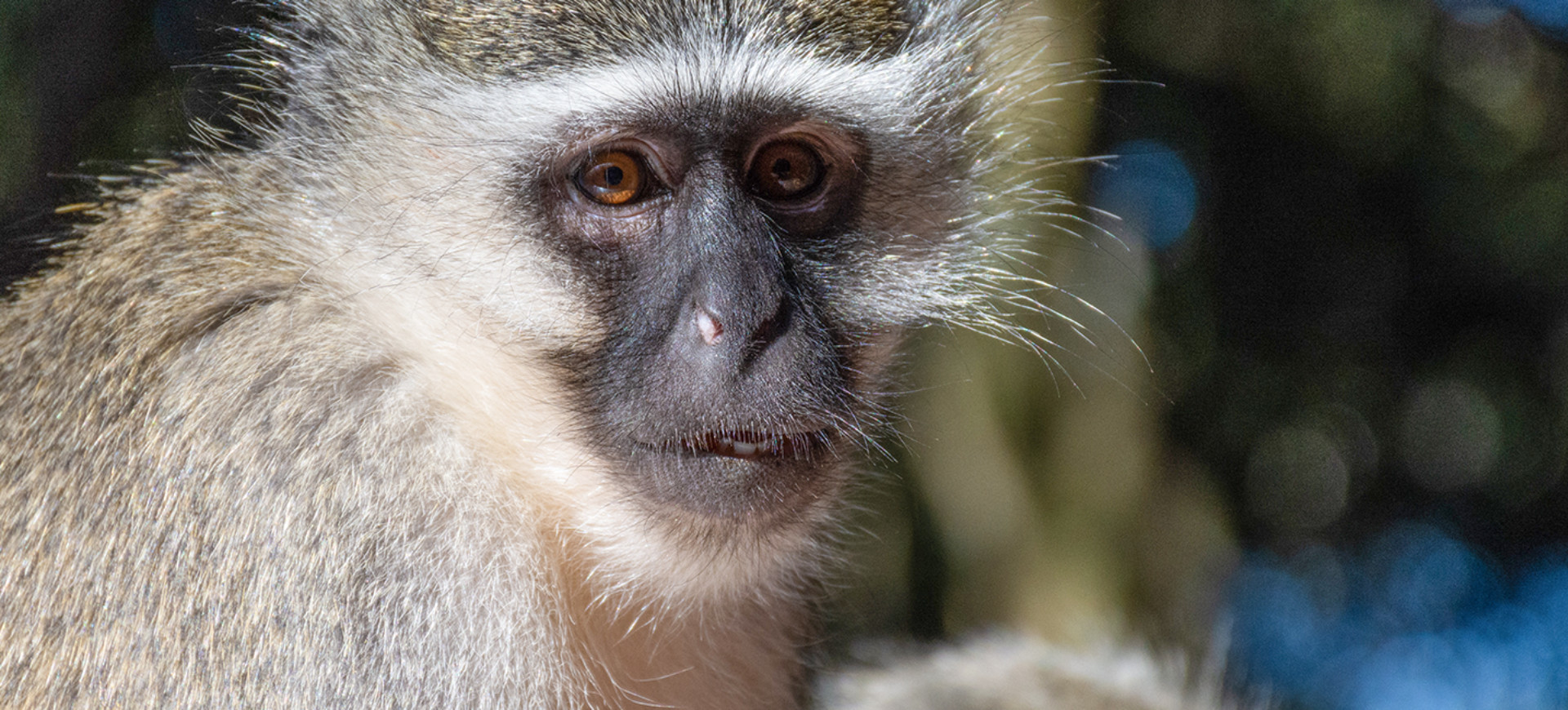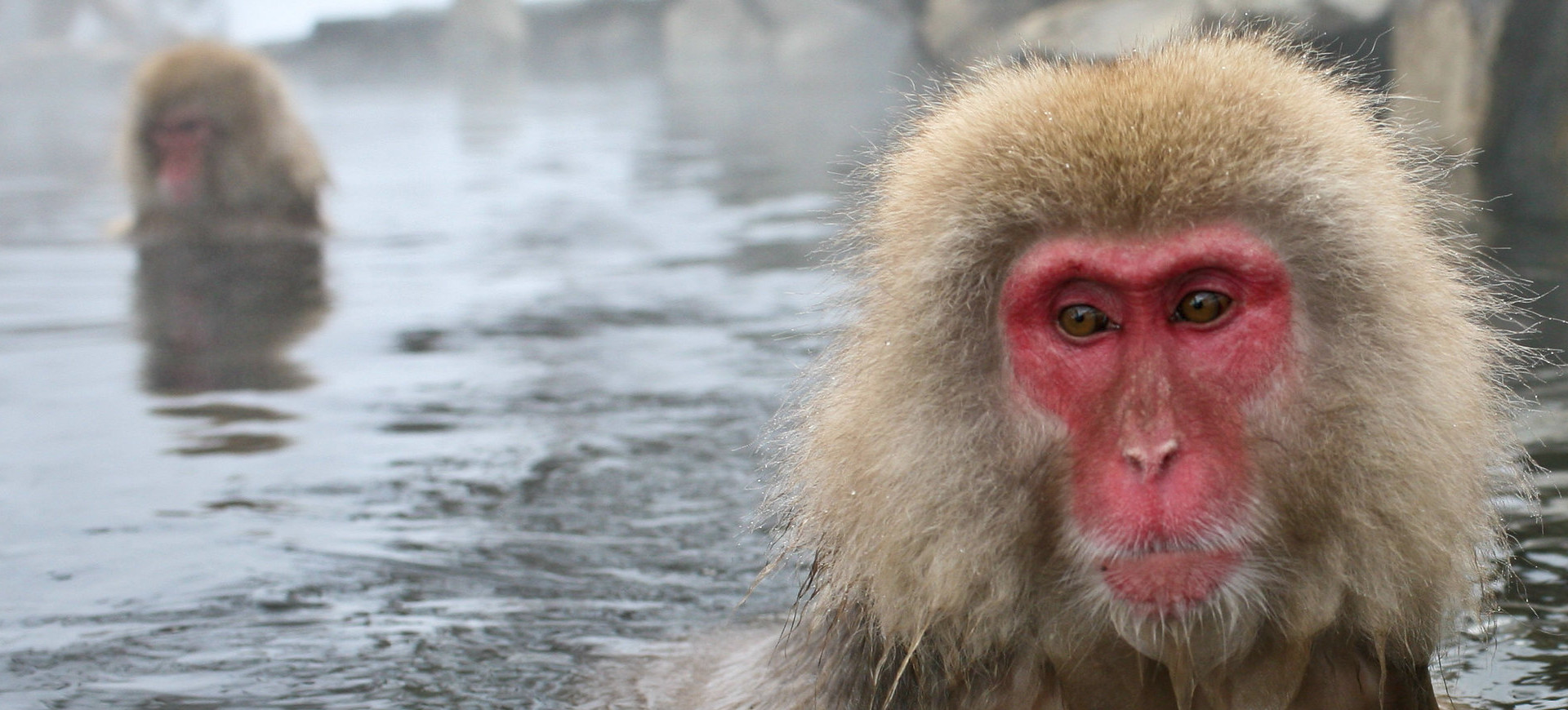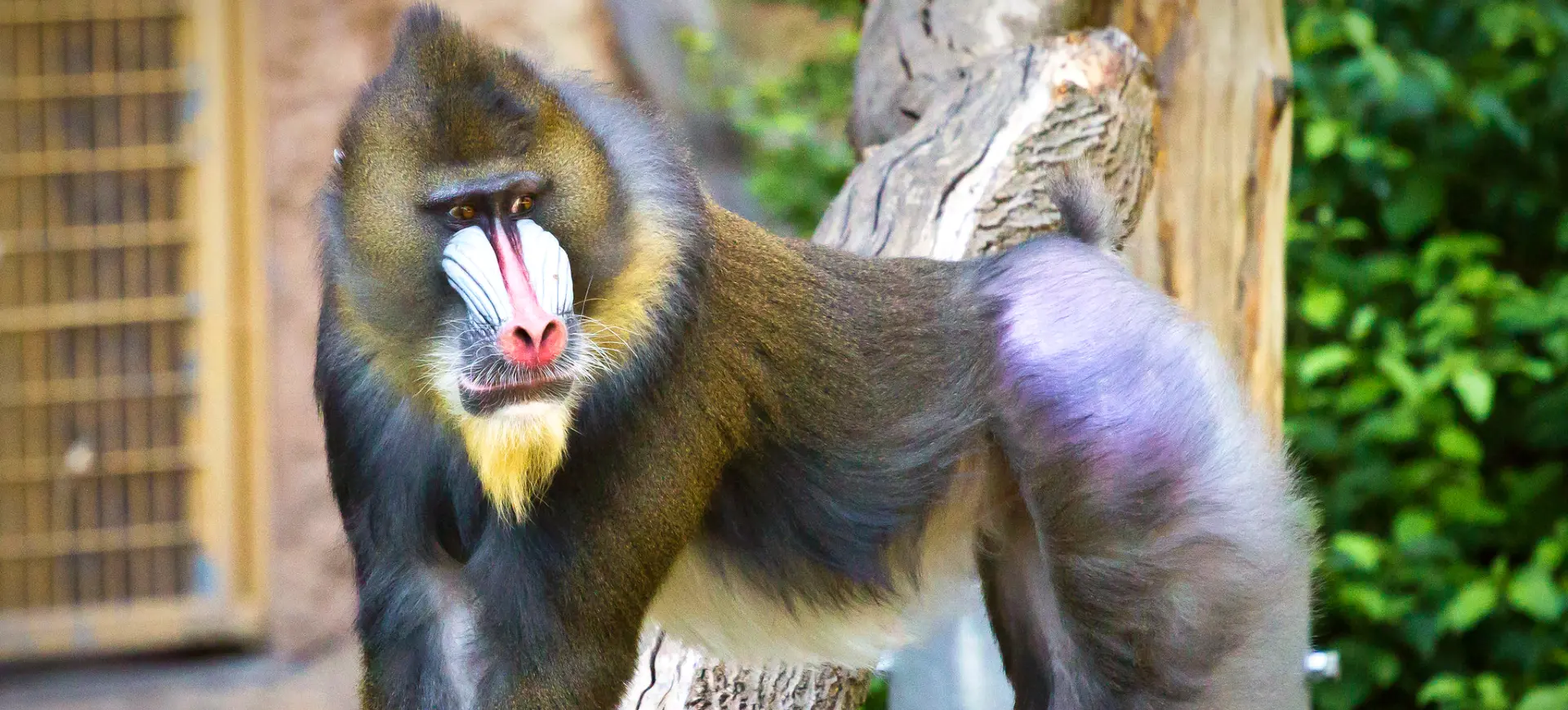Overview
Allen’s swamp monkey (Allenopithecus nigroviridis) is a semi-aquatic primate native to swampy forest regions in Central Africa. It is known for its ability to swim and wade through water, a rare trait among primates. The species is small to medium-sized, characterized by a robust body and a greenish-brown coat that offers excellent camouflage in their forested, wet habitats. These monkeys are social and live in groups, relying on their agility in trees and the ground to forage for food.
They have a broad, expressive face with a dark muzzle, large cheeks, and light-colored eyes. Their omnivorous diet consists of fruits, seeds, and invertebrates, making them adaptable to various food sources. Allen’s swamp monkeys are diurnal and spend most of their day foraging, communicating through vocalizations and social grooming. Although they are capable climbers, they prefer staying close to water and the forest floor, where they can escape from predators quickly by swimming.
These monkeys inhabit a limited range in the Congo Basin, particularly in swampy lowland forests. Despite their relatively small size, they are resilient and can adapt to different environmental conditions if water sources are nearby. Their population faces some pressure from habitat destruction, but they are not currently considered endangered. They play an essential role in their ecosystem by aiding seed dispersal and providing prey for larger predators.
Taxonomy
Kingdom
Phylum
Class
Order
Family
Genus
Species
Type
Current distribution:
The current range of Allen's swamp monkey is primarily concentrated in the Congo Basin, particularly in the Democratic Republic of the Congo and neighboring regions. This species has a limited but stable range within swampy forests and areas adjacent to rivers and lakes. While not widespread outside the Congo region, their populations remain stable in protected areas where their habitat remains intact. However, habitat loss due to logging and human encroachment poses a long-term threat to their population.
Populations are relatively sparse outside protected areas but can still be found in some community-managed forests. Fragmentation of habitats has led to isolated populations, which may result in future conservation concerns. Although their population is stable, ongoing environmental changes and deforestation could impact their future distribution. Conservation efforts focus on protecting swamp forests and limiting habitat destruction within their range.
Physical Description:
Allen’s Swamp Monkey has a robust build with a medium size, typically weighing 6 to 13 pounds. It has a short tail, which is not prehensile but aids in balance. The fur is generally greyish-brown, providing effective camouflage in its natural habitat. The face is distinctive, characterized by a white nose and dark fur around the eyes, resembling a mask.
The species has strong limbs and webbed fingers, which are adaptations for its semi-aquatic lifestyle. These features enable the monkey to swim efficiently and forage in water. The webbing between the fingers is particularly useful for scooping fish and other small aquatic animals. The teeth are also adapted for its omnivorous diet, capable of grinding plant material and tearing meat.

Lifespan: Wild: ~15 years || Captivity: ~23 years

Weight: Male: 13.2–16.5 lbs (6–7.5 kg) || Female: 8.8–11 lbs (4–5 kg)

Length: Male: 14–18 in (36–46 cm) || Female: 12–15 in (30–38 cm)

Height: Male: 17–20 in (43–51 cm) || Female: 14–17 in (36–43 cm)

Top Speed: 15 mph (24 km/h)
Characteristic:
Native Habitat:
Allen’s swamp monkey is native to the lowland swamp forests of Central Africa, particularly in the Congo Basin. These forests are characterized by dense vegetation and slow-moving rivers or standing water, ideal for the monkey’s semi-aquatic behavior. They prefer habitats with abundant water sources, where they can wade or swim to avoid predators and access food. This species is highly adaptable to various forest conditions but is most commonly found in areas with heavy waterlogged vegetation.
They thrive in tropical and subtropical moist broadleaf forests, where the canopy is dense, and the understory provides ample cover. Despite their adaptability, deforestation and habitat destruction have fragmented their range. These monkeys are also occasionally found in secondary forests, indicating some ability to adapt to altered landscapes. However, proximity to water remains a crucial requirement for their survival and distribution.
Climate Zones:
Biomes:
WWF Biomes:
Biogeographical Realms:
Continents:
Diet:
Diet & Feeding Habits:
Allen’s swamp monkey is an omnivore, feeding primarily on fruits, leaves, seeds, and aquatic vegetation. In addition to plant matter, they also consume invertebrates, small fish, and crustaceans, utilizing their unique semi-aquatic abilities. They forage in trees and on the ground, often near water bodies where they can catch aquatic prey. Their cheek pouches store food while foraging, allowing them to gather a substantial amount before consuming it safely in a secluded area.
Their diet shifts based on the seasonal food availability, making them opportunistic feeders. In the rainy season, fruits and seeds dominate their diet, while in drier times, they rely more on invertebrates and aquatic plants. They have strong teeth, including large molars, which help them process tougher vegetation. As social animals, feeding is often a communal activity, and they communicate through vocalizations and body language while foraging.
Mating Behavior:
Mating Description:
Allen’s Swamp Monkey has a polygynous mating system, where a single dominant male mates with multiple females. The breeding season is not well-defined, and mating can occur yearly. After a gestation period of about 5 to 6 months, the female gives birth to a single offspring, which is cared for primarily by the mother.
The young are born fully furred and with their eyes open. They cling to their mother’s belly for the first few weeks, gradually moving to her back as they grow older. Juveniles are weaned at around six months but may remain with their mother for up to a year. Social bonds are strong within the group, and alloparenting is common, where other females help care for the young.
Reproduction Season:
Birth Type:
Pregnancy Duration:
Female Name:
Male Name:
Baby Name:
Social Structure Description:
Allen’s Swamp Monkey lives in social groups of up to 40 individuals, led by a dominant female. These groups are matriarchal, and social bonds are strong within the group. The species exhibits various social behaviors, including grooming, play, and food sharing, strengthening social bonds and establishing a social hierarchy.
Within the group, individuals communicate using a variety of vocalizations, facial expressions, and body postures. The species is known for its complex social structure, which includes a range of roles and responsibilities for different individuals. Alloparenting is common, where other females help care for the young, and males play a role in defending the group from predators.
Groups:
Conservation Status:
Population Trend:
Allen’s Swamp Monkey is currently listed as Least Concern by the IUCN, but it faces habitat loss and hunting threats. The species is a common target for the bushmeat trade, which poses a significant risk to its population. However, its adaptable nature and versatile feeding habits have enabled it to survive in various habitats, including areas where habitat loss is a concern.
Allen’s Swamp Monkey’s conservation efforts focus on habitat protection and anti-poaching measures. The species is also part of several captive breeding programs to increase its population and genetic diversity. Despite these efforts, much work is needed to ensure the long-term survival of this adaptable and versatile primate.
Population Threats:
The primary threats to Allen’s Swamp Monkey include habitat loss due to agricultural expansion and logging and hunting for the bushmeat trade. While it is an adaptable species capable of surviving in various environments, these threats pose a significant risk to its population. Illegal hunting is particularly concerning, as it is a common target for the bushmeat trade.
Conservation efforts are focused on habitat protection and anti-poaching measures. However, the effectiveness of these measures is limited by a lack of resources and enforcement. Education and community involvement are crucial for the long-term survival of this species, as is the need for more comprehensive research to understand its ecology and behavior.
Conservation Efforts:
Conservation efforts for Allen’s Swamp Monkey are primarily focused on habitat protection and anti-poaching measures. The species is also part of several captive breeding programs to increase its population and genetic diversity. Protected areas have been established to safeguard their natural habitat, and anti-poaching patrols are conducted to deter illegal hunting.
Despite these efforts, much work is needed to ensure the long-term survival of this adaptable and versatile primate. Education and community involvement are crucial for conservation success, as is the need for more comprehensive research to understand its ecology and behavior. Funding and resources are also needed to support ongoing conservation initiatives.
Additional Resources:
Fun Facts
- Allen’s Swamp Monkey is native to the central African rainforests.
- It is a highly adaptable and versatile species.
- The monkey is semi-aquatic and an excellent swimmer.
- It has a polygynous mating system led by a dominant female.
- The species is omnivorous, feeding on a diverse diet.
- It is a social animal, living in groups of up to 40 individuals.
- It is not considered endangered but faces threats from habitat loss and hunting.
- The species is known for its complex social structure.
- It uses a variety of vocalizations for communication.
- It is part of several captive breeding programs aimed at increasing its population.


